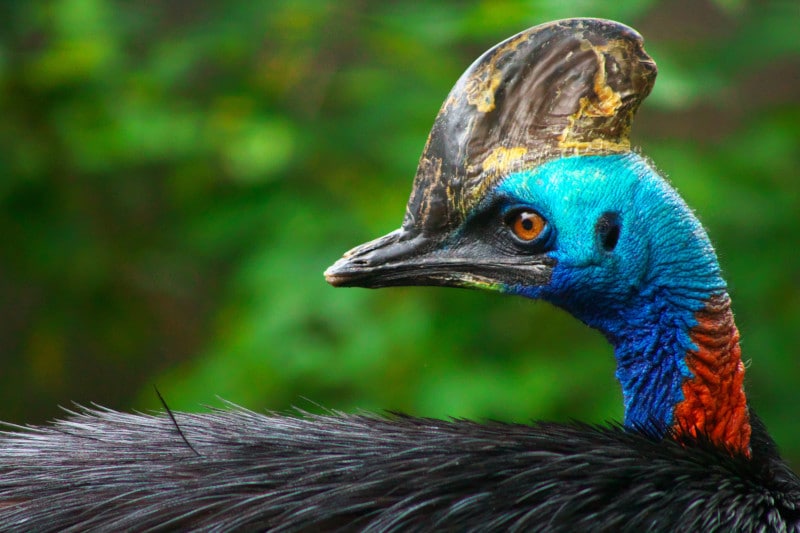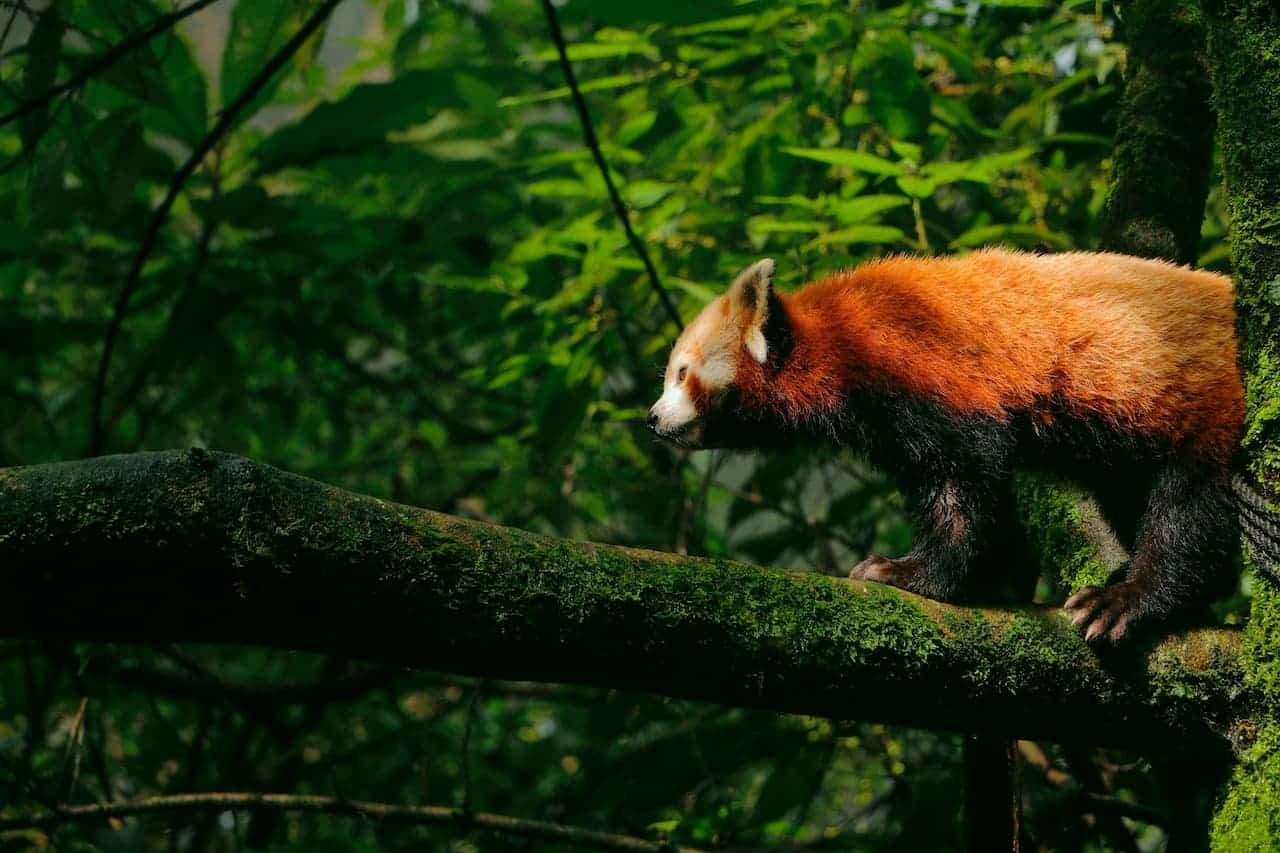Cancer Impact in Animals – Does It Impact Meat-eaters More Than Herbivores?
Because of its mortality and impact, cancer is one of the most researched medical conditions in veterinary and human medicine – but despite that, it remains one of the most mysterious.
Doctors and researchers are looking everywhere to find causes and cures for deadly malignancies. Although oncology has progressed tremendously and cancer survival is higher than ever, some answers still seem to evade us.
However, some explanations may be hiding in plain sight within the animal kingdom.
We hear about human cancers so much that we may forget animals can also get it – some at surprisingly high rates. On the other hand, creatures such as elephants, whales, mole rats, and many large herbivores are fairly cancer-free.
To find the missing parts of the grand medical puzzle, scientists and researchers have examined many molecular, environmental, and lifestyle factors that may contribute to cancer risk and resistance.
Unsurprisingly, a link between nutrition and cancer is one of the major points of both research and debate.
One of the more intriguing questions is whether meat-eaters get more cancer than plant-eaters, and if they do – what’s the catch?
Can novel research on animal malignancies be projected onto the human world? Read on if you want to learn more facts about cancer in animals: carnivores, herbivores, captive animals, and wild animals.
What Is Cancer?
Cancer is a condition in which abnormal, mutated, malignant cells divide out of control and invade nearby tissues, eventually spreading to other body parts via the blood and the lymph.
Naturally, the mutations accumulate in cell lineages during an organism’s lifetime. There are cellular and molecular mechanisms that control and destroy these cells.
However, some defective rogue cells can dodge these seek-and-destroy bodily tools; tumors occur when they divide and aggregate.
We often speak of cancer as a single disease – just remember all the “cure for cancer” phrases. However, in reality, cancer is plural – a group of conditions with various presentations and causes.
What Is The Main Risk Of Cancer?
Since the cells inevitably divide and the number of mutations increases with age, simply being a multicellular organism unavoidably puts you at cancer risk, and especially if you are a long-lived one.
Humans fit in both categories. Cancer is the deadliest medical condition in the human realm. According to WHO, it is responsible for 10 million (one in six) deaths yearly. Also, cancer survivors often have a reduced quality of life and remain at risk of disease relapse.
Because of the public discourse and the prevalence of cancer news in the media, one may get an impression that humans are the species most susceptible to cancer. And true, it is perplexing and frightening that 1 in 2 people in the UK and around 40 percent in the US are expected to get cancer during their lifetimes.
However, even with these figures, humans are not among the most cancer-prone species.
The Epidemiology Of Cancer In Animals
Besides being multicellular, being a mammal increases the risk of getting cancer. While it affects most (if not all) classes of vertebrates, mammals are at the top of the list.
Moreover, malignancies in mammals seem to show different and more diverse origins, presentations, and biochemical mechanisms.
Due to the lack of data, research has been slow to pinpoint how widespread cancer is across various mammalian species. However, the reports of malignant diseases have been consistent for animals in captivity and the wild.
We also know that manifestations and rates vary greatly between the animal groups.
What Animal Gets The Most Cancer?
True, there are malignancies whose prevalence is unique to Homo sapiens, such as lung, prostate, and testicular cancer. However, many mammals are more susceptible to cancer in general than humans.
Short-lived species of rodents are astoundingly cancer-prone, with some mice and rat strains having a whooping 95 percent cancer incidence.
One of the most notorious examples of animal cancer is the case of the Tasmanian devil (Sarcophilus harrisii). The population of this feisty carnivorous marsupial had been stable until the late 1990s.
In 1996, a virus-related, transmittable cancer called the Devil Facial Tumor Disease (DFTD) was discovered, spreading among individuals by bites occurring during their frequent fights.
The soft-tissue tumors usually appear on the head first and kill an animal in only six months. In only 20 years, the illness has shortened the life expectancy from 5 to 2 years and decimated the population.
In endangered species lists, the Tasmanian devil’s status went from Least Concerned to Threatened and at risk of extinction.
Why Does Cancer In Animals Occur?
All mammals share certain cancer dangers.
For example, aging is a risk factor in most species; the chance of cancer inevitably increases with age. Humans have such alarming cancer figures largely because our lifespans are increasing.
The same applies to our companion animals. Regarding cancer in pets – dogs and cats – they are similar to human rates. Sheltered from predators and treated for common diseases, they get to live longer lives, allowing cancer to show up.
Another important factor is body size. As each cell division carries the risk of a mutation, in theory, larger organisms with more dividing cells should also be more likely to develop cancer.
And indeed, statistics show that big humans and large dogs are more likely to develop malignancies.
The body size rule may be accurate for the same-species individuals. However, the animal kingdom harbors too many surprising exceptions to this idea when we look at it from a multi-species perspective.
Why Do Larger Animals Not Get Cancer?
Many large mammalian species have a negligible cancer risk. Some, like the whales, are nearly cancer-free despite their enormous size.
Also, in particular animal families, bigger members have a lower cancer incidence than smaller ones. For example, the capybara, a giant in the rodent world, has far fewer cancer deaths than the much-smaller guinea pigs.
The phenomenon is known as Peto’s paradox.
What Is Peto’s Paradox?
Peto’s paradox was named after Richard Peto, an English statistician and epidemiologist who first defined it. He observed that at the (inter)species level, cancer incidence is not correlated with the number of cells an organism has, despite the initial logic.
For now, the science is quite clear on why Peto’s paradox occurs. Because of the inherently bigger cancer risk, large animals would face an enormous danger of individual death and species extinction.
Due to this evolutionary pressure, natural selection favored individuals with molecular mechanisms that suppress or sabotage tumor development.
Although Peto’s paradox is undoubtedly there, how it occurs is still not fully clear. Still, there are separate discoveries of underlying mechanisms.
The Curious Case Of The African Elephant Cancer Resistance
For example, scientists have found that the largest cancer-free land mammal, the African elephant (Loxodonta africana), has 20 copies of the famous tumor suppressor gene, TP53. In comparison, the human genome holds only a single TP53 copy.
However, there is no evidence that other large cancer-resistant mammals like whales have developed extra copies of the TP53 gene – or any other tumor suppressor gene whatsoever.
Based on the available findings, we can conclude that cancer resistance has evolved independently several times and includes different mechanisms of action.
What factors influence the evolution ruling Peto’s paradox is unknown. Since all animals are heterotrophs and have to eat to stay alive, nutrition and diet have been keenly studied factors that may affect cancer risk.
Are Carnivores More Susceptible To Cancer?
A study by scientists of Hungary’s Centre for Ecological Research and led by a research fellow Orsolya Vincze focused on tracking down cancer among a large number of deceased zoo animals.
The team has analyzed post-mortem records of 110,148 individuals across 191 mammalian species and mapped the (age-controlled) cancer mortality on the mammalian tree of life.
The study aimed to examine the case for Peto’s paradox and reduce the gap in malignant disease data among different species of mammals.
The team showed that there is indeed a high frequency of malignant diseases in mammals, with substantial differences in cancer mortality between different major mammalian orders.
Cancer In Animals – Herbivores vs Carnivores
An interesting pattern that the team noted was that there were much more cancer deaths among carnivorous mammalian species – and especially those that ate other mammals.
By contrast, least cancer-prone were artiodactyls, herbivores that include antelopes, cows, and sheep. For example, none of the 196 examined blackbuck antelopes (Antilope cervicapra) were found to have cancer.
Another cancer-free study superstar species was the Patagonian mara (Dolichotis patagonum), a sizeable Argentinian rodent whose diet primarily comprises grasses. None of the 213 examined individuals had cancer at the time of death.
The species with the highest cancer mortality was a small, carnivorous Australian marsupial kowari (Dasyuroides byrnei), with 16 of the 28 examined records noting cancer as the cause of death.
Why Do Carnivores Get More Cancer?
The research team tested several ideas to pinpoint a reason for carnivorous mammals succumbing to cancer more often than their herbivorous counterparts.
The occurrence of neoplasms could be connected to the diet itself because high-fat, low-fiber nutrition affects gut flora and decreases microbiome diversity. The same cancer link cancer has also been proposed in humans. However, the mechanisms of this connection remain unclear.
Another – and highly likely – assumption is that consuming raw meat exposes the carnivores to pathogens that can induce cancer.
According to current findings, infections attributed to seven viruses, one bacteria, and two trematode parasites are estimated to cause 15–20% of human cancers.
However, this percentage is likely underestimated mainly because the connections are sometimes unclear or undervalued, infectious causation has actually been ruled out for a tiny portion of cancers, and not all infectious agents have yet been identified.
However, we do know that similar organisms can transfer cancer-causing viruses among each other. Carnivory is a risk factor because host jumping is likely when a related predator consumes a virus-carrier prey (or at least they make close contact). That is why such viruses jump from mammals to mammals more easily than, for example, from fish to mammals.
The zoo animal cancer research thus suggests that pathogen-driven malignancies may have a significant share in overall cancer rates in carnivorous mammals. However, it also notes that such a link is sometimes elusive due to the difficulty of proving the pathogen’s ability to cause cancer.
However, there is anecdotal evidence. For example, the study’s leader Orsolya Vincze says that a link between some cancer cases and the papillomavirus-infected cow carcasses was discovered in captive lions.
What Protects Herbivores From Cancer?
The relation between carnivory and cancer is not entirely clear.
The same is true for herbivory and reduced cancer risk.
Most cancer-free animals have a low-fat, fiber-rich diet that could be a factor, but the mechanism is unclear. Another possibility is that there is a genetic, molecular adaptation due to the size of the animals, as noted by Peto’s paradox.
In any case, understanding how these animals defy cancer or beat it before it beats them may help us develop solutions to human malignancies in the future.
Last but not least, this study of cancer rates in zoo animals is a strong confirmation of body mass and life expectancy components of Peto’s paradox – there were no particular correlations between animal size and cancer rates.
Instead, the results likely reflect that evolutionary mechanisms independently shaped cancer resistance.
Major Work On Wild Animal Cancers Is Yet To Be Done
The researchers have distanced themselves from factors they could not control for in the study. Limited physical exercise in captivity, potential alterations in the diet of zoo carnivores (e.g., consumption of domesticated animal meats), or other aspects of physiology could, in theory, all contribute to elevated cancer risks.
The way to confirm the results would be to compare them to wild populations. Unfortunately, that is hard to do from existing data. Findings on cancer in wild animals are largely anecdotal or based on a small sample size.
To get the big picture right, we need new, extensive research on cancer in natural animal populations.
The Hungarian Centre for Ecological Research study results reflect a complex and likely indirect evolutionary link between diet and cancer. The team also points out that all the hints about meat diet and cancer risk “should be interpreted with caution.”
Does Diet Influence Cancer In Humans?
A major study has estimated that 30–35% of cancer deaths in the US were linked to diet, with some types of cancer being much more represented than others. For example, somewhat logically, diet contributed to as many as 70 percent of colorectal cancer deaths.
However, how exactly diet increases the cancer risk is not fully understood. The uncertainty causes controversy and confusion regarding many common food items – from gluten-rich grains to meat.
Does Eating Meat Causes Cancer In Humans?
The findings of the zoo animal cancer study should not be automatically translated to the human realm. Even though human omnivory includes eating meat, our lifestyles and food preparation techniques separate us from animal diets to a large extent.
Still, there are some parallels. Some animal pathogens can find themselves in the human body through contact with the infected animal tissue.
Research shows that pathogen exposure increases the risk for malignant diseases and that people in frequent contact with domestic animal carcasses (e.g., slaughterhouse workers) are at a higher risk of certain cancers.
Also, although we are still in the dark about how meat-eating could increase human carcinoma risk, red meat constantly keeps popping up as a risk booster for dying, both of cancer (especially the gastrointestinal types) and cardiovascular diseases, across multiple studies.
Undoubtedly, many known carcinogens come through red meat consumption – nitrates and nitrosamines used in food preservation, pesticides and dioxins accumulating through the food chain, food additives, or various components including plastic compounds from food packaging and preparation.
What we do know for sure is that what happens to meat during food preparation can boost cancer risk. For example:
- Heterocyclic amines produced during the cooking of red meat are carcinogens.
- Charcoal cooking and smoke curing generate harmful carcinogenic compounds such as pyrolysates.
- Meat processing adds a plethora of potential carcinogens, such as nitrates, to the table.
Additionally, the overconsumption of meat (but not only meat) contributes to obesity, another cancer risk factor. According to an American Cancer Society study, of all US cancer deaths, 14% in men and 20% in women are attributable to excess weight or obesity.
Conclusion
For reasons that are quite understandable, the research and public focus are perpetually fixated on human cancers. Consequently, the rest of the animal kingdom still harbors many unknowns and mysteries about susceptibility to malignant diseases.
However, we have many motivations to try and fill in that gap. The vulnerabilities of certain animal groups to malignancies may help us learn about the origins of cancer. On the other hand, a fascinating cancer resistance present in some species can help us find ways to protect ourselves from deadly conditions in the future.
However, our knowledge of cancer in animals is still based on sporadic findings. The in-depth studies were done only on a handful of species; we don’t even know the proper cancer rates across the Tree of Life.
Each study that helps us gain a deeper knowledge of animal cancer epidemiology is sure to yield future benefits for animals and humans alike.
Resources
Scientific Studies
Anand, P., Kunnumakkara, A. B., Sundaram, C., Harikumar, K. B., Tharakan, S. T., Lai, O. S., Sung, B., & Aggarwal, B. B. (2008). Cancer is a preventable disease that requires major lifestyle changes. Pharmaceutical research, 25(9), 2097–2116. https://doi.org/10.1007/s11095-008-9661-9
Calle, E. E., Rodriguez, C., Walker-Thurmond, K., Thun, M. J. (2003) Overweight, obesity, and mortality from cancer in a prospectively studied cohort of U.S. adults. N Engl J Med. 348:1625–1638 doi:10.1056/NEJMoa021423
Efird, J. T., Davies, S. W., O’Neal, W. T., & Anderson, E. J. (2014). Animal viruses, bacteria, and cancer: a brief commentary. Frontiers in public health, 2, 14. https://doi.org/10.3389/fpubh.2014.00014
Ewald, P. W., & Swain Ewald, H. A. (2015). Infection and cancer in multicellular organisms. Philosophical Transactions of the Royal Society of London. Series B, Biological sciences, 370(1673), 20140224. https://doi.org/10.1098/rstb.2014.0224
Gorbunova, V., Seluanov, A., Zhang, Z., Gladyshev, V. N., & Vijg, J. (2014). Comparative genetics of longevity and cancer: insights from long-lived rodents. Nature reviews. Genetics, 15(8), 531–540. https://doi.org/10.1038/nrg3728
Pan, A., Sun, Q., Bernstein, A. M., Schulze, M. B., Manson, J. E., Stampfer, M. J., Willett, W. C., & Hu, F. B. (2012). Red meat consumption and mortality: results from 2 prospective cohort studies. Archives of Internal Medicine, 172(7), 555–563. https://doi.org/10.1001/archinternmed.2011.2287
Rose, R.K., Pemberton, D.A., Mooney, N.J., Jones M.E., Sarcophilus harrisii (Dasyuromorphia: Dasyuridae), Mammalian Species, Volume 49, Issue 942, 1 May 2017, Pages 1–17, https://doi.org/10.1093/mspecies/sex001
Tollis, M., Boddy, A.M., Maley, C.C. (2017) Peto’s Paradox: how has evolution solved the problem of cancer prevention? BMC Biol 15, 60. https://doi.org/10.1186/s12915-017-0401-7
Vincze, O., Colchero, F., Lemaître, JF. et al. Cancer risk across mammals. Nature 601, 263–267 (2022). https://doi.org/10.1038/s41586-021-04224-5
Articles
1 in 2 people in the UK will get cancer. Cancer Research UK Press Release. 4 February 2015
https://news.cancerresearchuk.org/2015/02/04/1-in-2-people-in-the-uk-will-get-cancer/
Cancer Statistics. National Cancer Institute
https://www.cancer.gov/about-cancer/understanding/statistics
Klein, A. Meat-eating mammals are more susceptible to cancer than herbivores. New Scientist. 22 December 2021








